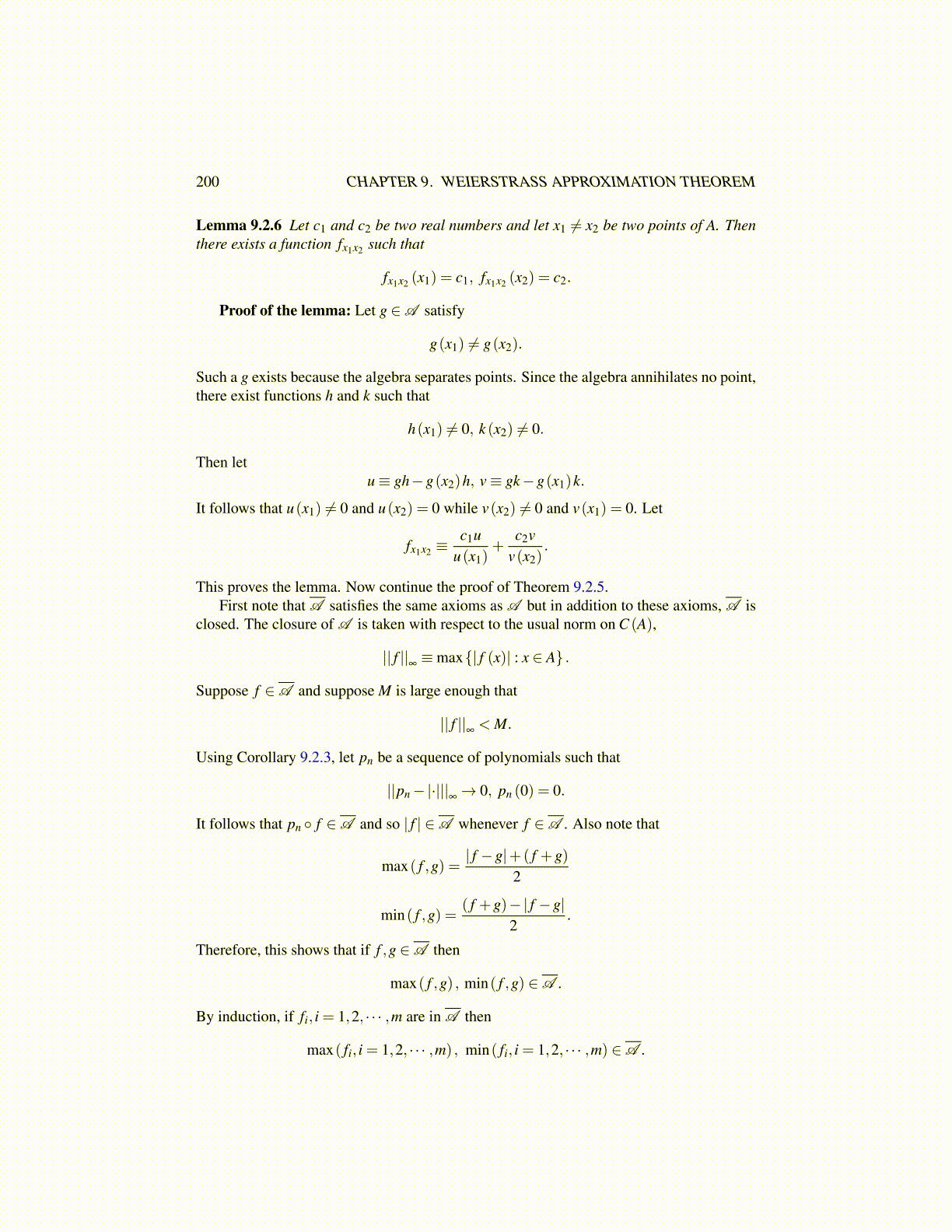
200 CHAPTER 9. WEIERSTRASS APPROXIMATION THEOREM
Lemma 9.2.6 Let c1 and c2 be two real numbers and let x1 ̸= x2 be two points of A. Thenthere exists a function fx1x2 such that
fx1x2 (x1) = c1, fx1x2 (x2) = c2.
Proof of the lemma: Let g ∈A satisfy
g(x1) ̸= g(x2).
Such a g exists because the algebra separates points. Since the algebra annihilates no point,there exist functions h and k such that
h(x1) ̸= 0, k (x2) ̸= 0.
Then letu≡ gh−g(x2)h, v≡ gk−g(x1)k.
It follows that u(x1) ̸= 0 and u(x2) = 0 while v(x2) ̸= 0 and v(x1) = 0. Let
fx1x2 ≡c1u
u(x1)+
c2vv(x2)
.
This proves the lemma. Now continue the proof of Theorem 9.2.5.First note that A satisfies the same axioms as A but in addition to these axioms, A is
closed. The closure of A is taken with respect to the usual norm on C (A),
|| f ||∞≡max{| f (x)| : x ∈ A} .
Suppose f ∈A and suppose M is large enough that
|| f ||∞< M.
Using Corollary 9.2.3, let pn be a sequence of polynomials such that
||pn−|·|||∞→ 0, pn (0) = 0.
It follows that pn ◦ f ∈A and so | f | ∈A whenever f ∈A . Also note that
max( f ,g) =| f −g|+( f +g)
2
min( f ,g) =( f +g)−| f −g|
2.
Therefore, this shows that if f ,g ∈A then
max( f ,g) , min( f ,g) ∈A .
By induction, if fi, i = 1,2, · · · ,m are in A then
max( fi, i = 1,2, · · · ,m) , min( fi, i = 1,2, · · · ,m) ∈A .